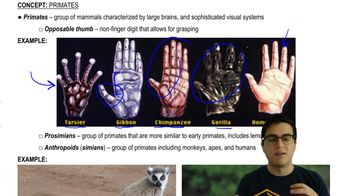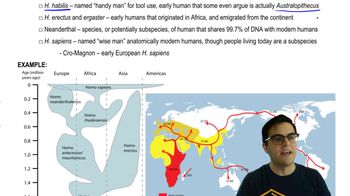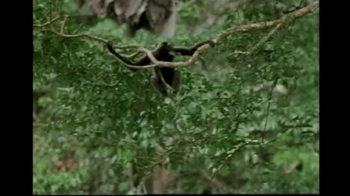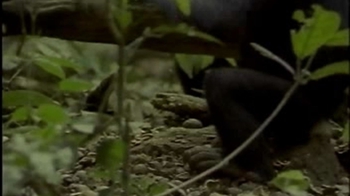32. Vertebrates
Primates and Homonids
32. Vertebrates
Primates and Homonids
Additional 8 creators.
Learn with other creators
Showing 11 of 11 videos
Practice this topic
- Multiple ChoiceAnalysis of DNA from a variety of sources has led most researchers to agree that __________.
- Multiple ChoiceWhat was the earliest hominin to have an enlarged brain (relative to body size)?
- Multiple Choice__________ arose very early in hominid evolution; __________ evolved more recently.
- Multiple ChoiceWhich of the following correctly lists probable ancestors of modern humans from the earliest to the most recent?
- Open QuestionWhich of the following is not a property of DNA polymerase?a. It adds dNTPs only in the 5'→3' direction.b. It requires a primer to begin synthesis.c. It opens the two strands of DNA at the replication fork.d. Its exonuclease activity is involved in proofreading.
- Open QuestionIn the primate phylogenetic tree below, fill in groups (a)–(e). Of the groups, which are anthropoids and which are apes? a. b. c. d. e.
- Open QuestionWhat is the function of primase?a. synthesis of the repetitive, short double-stranded DNA sequences required by DNA polymeraseb. synthesis of a short RNA strand that is complementary to single-stranded DNAc. closing the gap at the 3′ end of DNA after excision repaird. removing primers and synthesizing a short section of DNA to replace them
- Open QuestionMost species of hominins are known only from Africa. Which species have been found in other parts of the world as well?a. early Homo—H. habilis and H. ergasterb. H. erectus, H. neanderthalensis, and H. floresiensisc. gracile australopithecinesd. robust australopithecines













